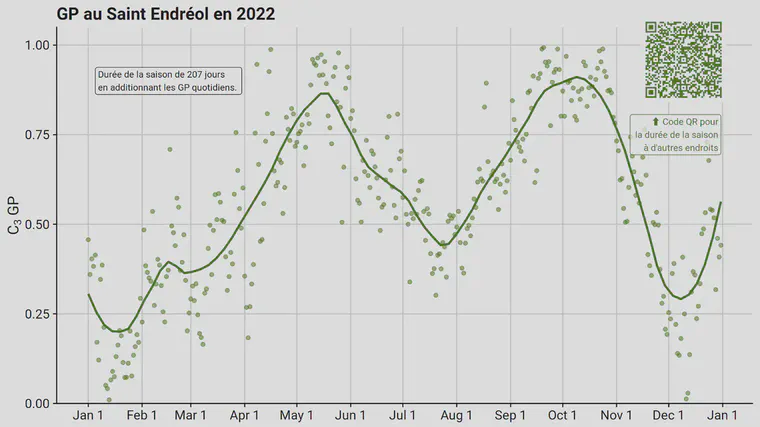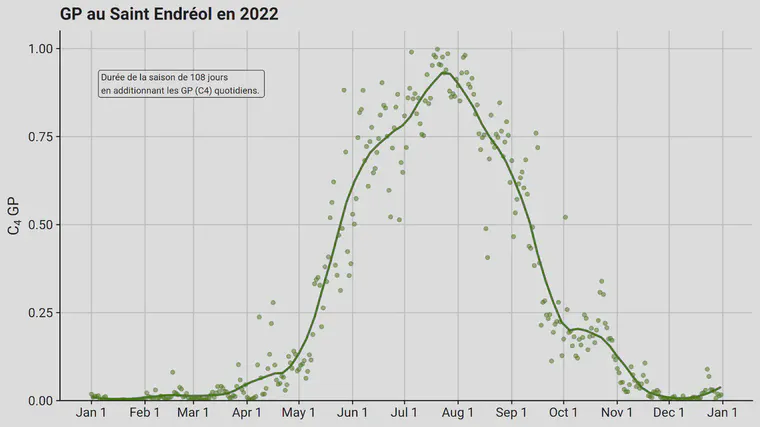Seminars in France, November 6 & 7, 2023
Slides
You can download the slides here:
- November 6, Golf de Saint-Cloud, Un système moderne de gestion du gazon adaptée à chaque site, 6.5 MB PDF file
- November 7, Golf de Saint-Endréol, Un système moderne de gestion du gazon adaptée à chaque site, 5.2 MB PDF file
Notes
You can get new information from ATC through our email newsletters.
Find turfgrass reference information, site-specific weather and climate appraisals, and weekly updates at the PACE Turf information center.
For more about MLSN, see this article by Romain Giraud: NMND : niveau minimum pour une nutrition durable des greens de golf.
I mentioned Chris Tritabaugh’s Substack newsletter. You can read it, and get a free subscription, at The ct_turf newsletter.
A Cynodon question at Saint-Endréol

At St. Endreol, I showed the C3 growth potential (GP) (above) and mentioned that I would make a chart and calculate the estimated N rate that might work well for Cynodon at that location.

The estimated N that I expect for these temperatures for Cynodon is 142 kg/ha (14.2 g/m2).
How do I get those N values?
I use maximum monthly N amounts that are linked directly to GP. For bentgrass, I assume that when the GP is 1, the maximum N applied would be 20 kg/ha. That, for Agrostis, is with a C3 GP. For Zoysia with a C4 GP, I also use 20. For Festuca rubra, 20, maybe even 15. For Paspalum vaginatum and Poa annua I use 30. For Cynodon and Lolium perenne I use 40.
With Agrostis, the sum of GP is 207 days. The monthly maximum N I would use is 20, or 240 if all twelve months had perfect temperatures. This is $\frac{240}{365}=$ 0.66 kg/ha/day. If I multiply that daily value by the sum of GP, I get the estimated annual N of $\frac{240}{365}(207)=$ 136 kg/ha. That’s for Agrostis.
For Cynodon, I’m using C4 GP and a monthly maximum of 40 kg/ha, so the annual total comes to $\frac{480}{365}(108)=$ 142 kg/ha.
For the mountain courses …
If you sometimes have winter damage from snow or ice at your location, please consider providing information to the Winter Turf project.
OM and videos and podcasts
See more about OM246 testing, including sampling instructions and a sample report, at the OM246 project page.
For even more information, see:
- The ATC YouTube channel
- The ATC Doublecut and the ATC Office Hours podcasts.